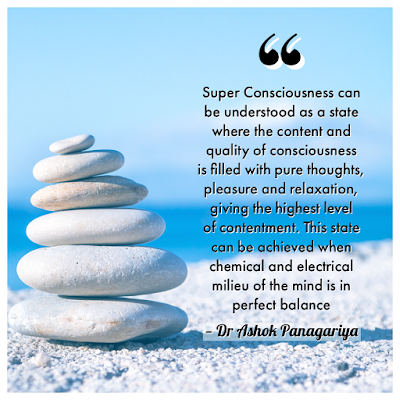Consciousness: Awareness or enlightenment?
What we are living through is an unforeseen period. It is a trying time, both mentally and emotionally. Given the circumstances, it is natural to look for a de-stressing mechanism or turn toward spirituality. The ways in which we choose to do so may be different, but the end goal takes us through the route of ‘consciousness.’
To talk about consciousness is like opening a Pandora’s Box. Generally speaking, it would translate into ‘awareness’, but from a neurological point of view, consciousness would be the state of awareness of the self, environment, and one’s responsiveness to external stimuli and internal needs.
 By the neurological benchmark, consciousness has two components — level of consciousness and the content of consciousness, the latter determining the spectrum of enlightenment of an individual. The level of consciousness defines the degree of variation from normal alertness, while the content of consciousness is defined by the quality and coherence of thought and behaviour. The content determines the spectrum of enlightenment in terms of an individual’s behaviour, emotions, memory and perception. That said, the first step to enlightenment is the state of being mindful of one’s surroundings, of simply being aware.
By the neurological benchmark, consciousness has two components — level of consciousness and the content of consciousness, the latter determining the spectrum of enlightenment of an individual. The level of consciousness defines the degree of variation from normal alertness, while the content of consciousness is defined by the quality and coherence of thought and behaviour. The content determines the spectrum of enlightenment in terms of an individual’s behaviour, emotions, memory and perception. That said, the first step to enlightenment is the state of being mindful of one’s surroundings, of simply being aware.
In non-scientific parlance, consciousness or awareness is the kind of experience that is lost when one faints, dreams or slips into a coma. In ordinary clinical jargon, one uses terms like stupor, sub-consciousness or consciousness. However, these fail to communicate the actual complexities of the subject. Since modern science is not sure about the origin and nature of most psychic phenomena, including dreams, it is tempting to search for wisdom of ancient scientists, theologists and philosophers. The Vedas and Upanishads described the four state of consciousness as Jagriti (wakefulness), Swapna (dream), Sushupta (deep sleep) and Turiya (non-dual or transcendental consciousness).
Simple wakefulness is controlled by the reticular activating system, a fibre system arising from the brainstem sending impulses to both the hemispheres to keep them vigilant for perceiving external and internal signals. But the content of consciousness is modulated by neuronal circuits of the limbic system, a major component of the mind.
Pure Consciousness, Divine Consciousness or Super Consciousness (Anukarana Chitta) are terms frequently used by mystics, since it is generally held in mystical traditions and not in scientific reality. To hypothesise scientifically, it could be understood as a state where the content and quality of consciousness (the inner world) is filled with pure thoughts, pleasure and relaxation, giving the highest level of contentment.
This state can be achieved when chemical and electrical milieu of the mind is in perfect balance. Such a balance can be achieved by simultaneous activation of pleasure channels and inhibition of channels mediating stress. The Super Conscious mind, working through the conscious and sub-conscious states, brings forth intuition, clarity and insight.
The sub-conscious mind is a very frequently used word and has still not been described very scientifically. In Vedas, it is ‘Vasana Chitta’ and ‘Samskara Chitta’, the mind of ‘subliminal traits’ and ‘impressions’.
Scientists, to begin with, thought and believed that the sub-conscious mind is the ‘ancient’ understanding of the mind, in contrast with the more recent cortical level of thinking. More recently, it has come to be understood as the circuitry which connects emotions with past memory residing diffusely in both the cerebral hemispheres. This probably explains the layman’s perception of sub-consciousness, in which there are occasional episodes of amnesia for words or events on the one hand, and brilliant unexpected answers on the other.
The quest to solve the puzzle of human consciousness, the very essence of our being, is one of the greatest challenges for modern science. Lately, multi-specialty integrated programmes are in the process of being launched and offer hope to us for becoming more conscious of the ‘Consciousness’.


Comments
Post a Comment